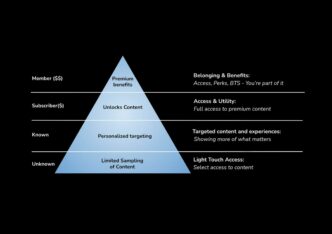

The Audiencers’ Festival Toronto was one to remember – held in the legendary El Mocambo, where the likes of The Rolling Stones and Billy Idol have performed, the energy from speakers and attendees alike was incredible.
After the first break, 3 registration experts took to the stage to share a unique case study on how they’ve successfully increased their logged user base, created value for members and moved readers through the funnel towards higher ARPU.
On stage:
- Dustin Block, Audience Development Lead at Graham Media Group
- Elliot NG, Director Customer Experience & Loyalty at CBC
- Ashley Hawley, Head of Product at Toronto Star
Graham Media Group
The context: Graham Media Group is a local TV/broadcasting brand in the US.
An audience role was only formally established in 2018 where the focus was on large, unknown audiences. But Dustin asked, so what? What does this translate to in a meaningful way?
The strategy: actually engaging audiences, prioritizing data to focus on better understanding audience behavior
The solution: build a membership program, something that was pretty unheard of in TV/broadcasting at the time
The goal was to develop a strategy that took dependency off other platforms to prioritize audience engagement and community building. Users would be encouraged to create an account via the registration wall to move through the funnel towards being ‘insiders’ who come back regularly to the site, attend events and contribute to User Generated Content, including:
- Comment sections and community, which has turned into a huge source of value for readers, especially when journalist are in the comment section, responding to readers
- Community Help Desk where audiences can file tickets with information that the newsroom needs
- ‘Pins’ photo and video sharing platform
Pins: looking at social media platforms for inspiration
Learning from these explosive growth companies, the team wanted to create an addictive quality, something that users wanted to keep coming back to and thought of first when an event happened. So, they launched ‘Pins’, a photo and video sharing platform, reserved for registered users. This content that then be seen by other members and shared in broadcast and digital stories.
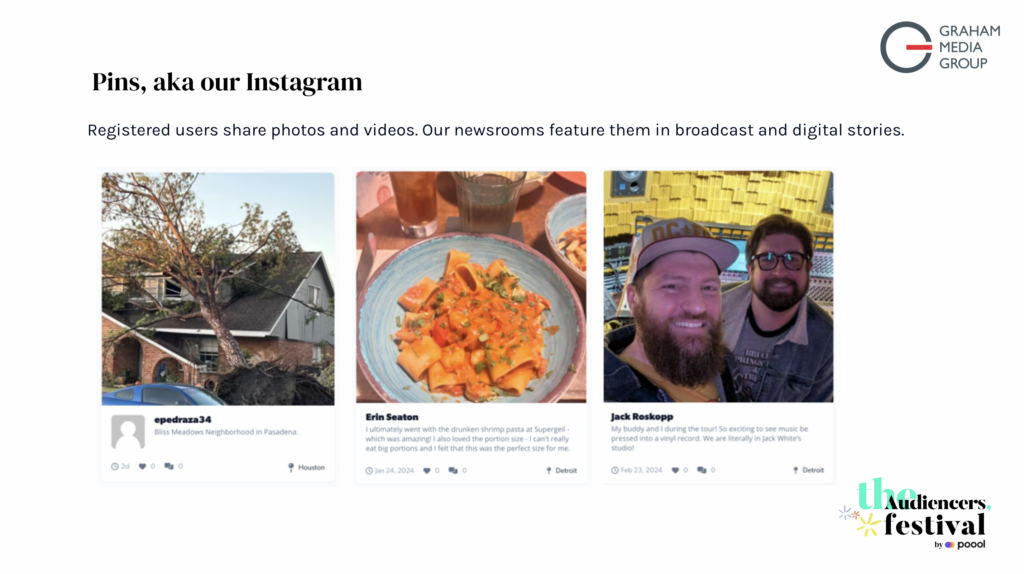
For instance, below is an example of photos sent in during a hail storm in Texas. 500 users posted a pin.
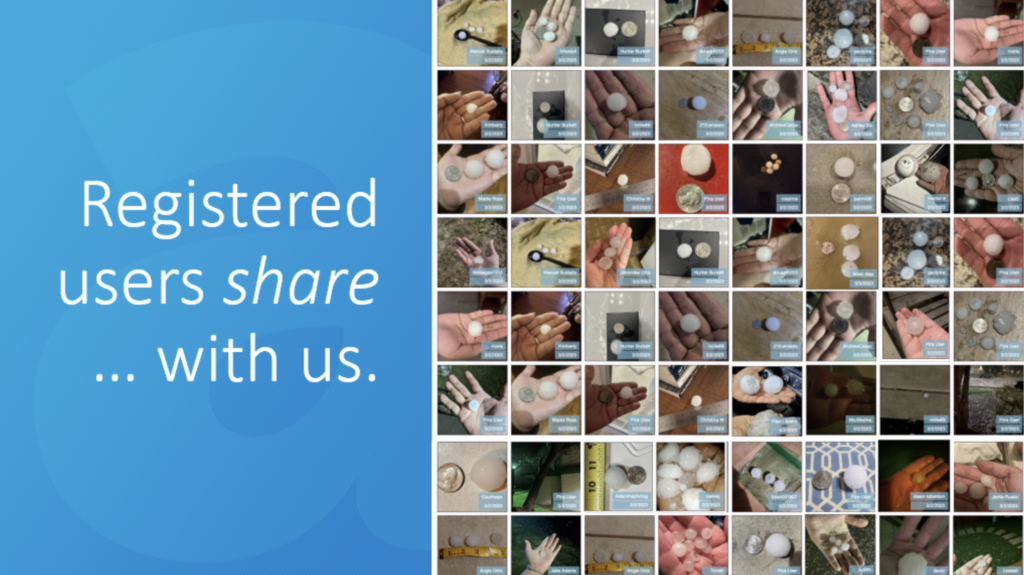
Building internal confidence in Pins
One essential in Pins’ success was the focus on internal buy-in:
- Launched a ‘10×10’ product sprint to update the platform (10 updates in 10 weeks) and put out release notes everyday to build enthusiasm around the platform. Before this sprint, they averaged at 77 pins shared across the group. Today, they average at 145 pins shared per day. The goal for 2024 is 175 pins per day.
- Used an “Ideas” portal so anyone in the company could send product feedback to win internal support needed to promote the tool (personal advocacy behind ideas)
- Releasing an update each week with improvements
73% of “Pins” users in the past year remain engaged with their local GMG brand.
The next goal is to take this a step further by training insiders as Citizen Reporters with Pins.
Building products for registered users adds value, deepens engagement, and supports retention
The value of registration and adding value to this membership product has been proven time and time again.
- Nearly 600,000 registered users
- 30,000 daily logged-in users (an essential new KPI)
- Insiders are 15x more valuable than an average user
- 10%+ conversion rates on targeted marketing for high-value outcomes
- Built a consumer revenue stream around events
- Shifted strategic focus to loyal and engaged audiences
> You’ll also enjoy: A single account across Switzerland: how OneLog is changing the registration game for digital publishers and readers
CBC
The context: The Canadian Broadcasting Corporation is the Canadian public broadcaster for both radio and television. They have a split funding model from the government and commercial revenue.
The strategy: boost daily active users on CBC Gem (their on-demand streaming platform) and focus on post-registration end-to-end funnel optimization
The solution: content windowing strategy (registration wall) with a new, seamless login and improved product experience
In implementing this login strategy to CBC Gem, the team identified 4 key considerations:
- Customers: What’s changing? What do I have to do to keep watching? How can I login seamlessly? How can I continue to watch on my Smart TV?
- Data: How many customers do we have? How to segment?
- Legal: What’s within the Canadian anti-spam compliance law?
- Sales: What’s the quickest way to get anonymous customers to login without losing ad impressions?
The solutions:
- Login seamlessly – make sure customers know that they can login with their previous CBC login methods
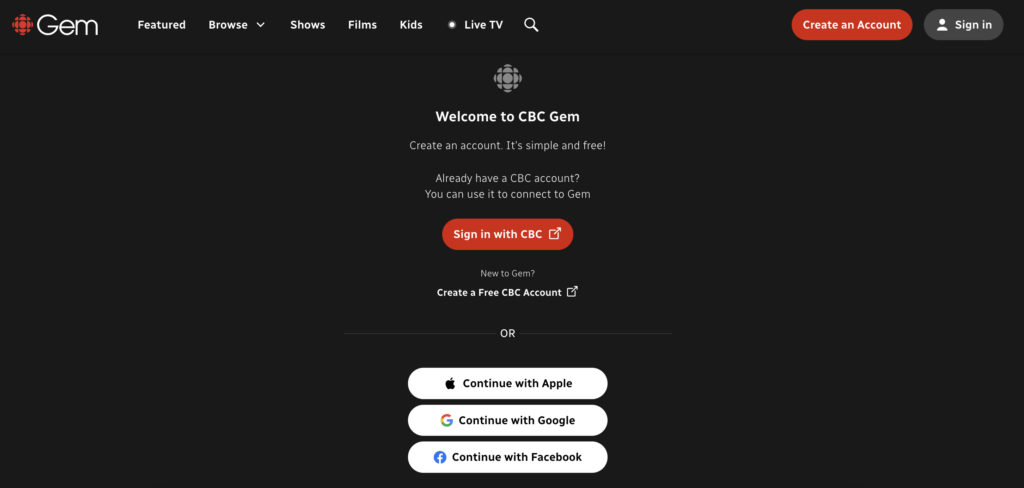
- Eliminate surprise – inspired by BBC’s authentification approach, the CBC team chose to communicate the change ahead of the change. Tactics included email, in-product modal, targeted video ads, employee comms, roadshows and additional CX training
- Drive Connected TV viewing – use advanced analytics to connect marketing campaigns to Connected TV stream
Toronto Star
The context: Toronto Star is a Canadian daily newspaper owned by Torstar Media Group. They’ve had registration on their site for quite some time, and these members have proven to be 15x more likely to subscribe. But there was some disconnect for users in terms of what they were getting. Why should someone register? What would they get as a result of this action?
The strategy: an exploration into the functionalities and experiences that should be unlocked for registered users to drive engagement
The solution: unlocking commenting for non-subscribers, notification bell and AMAs
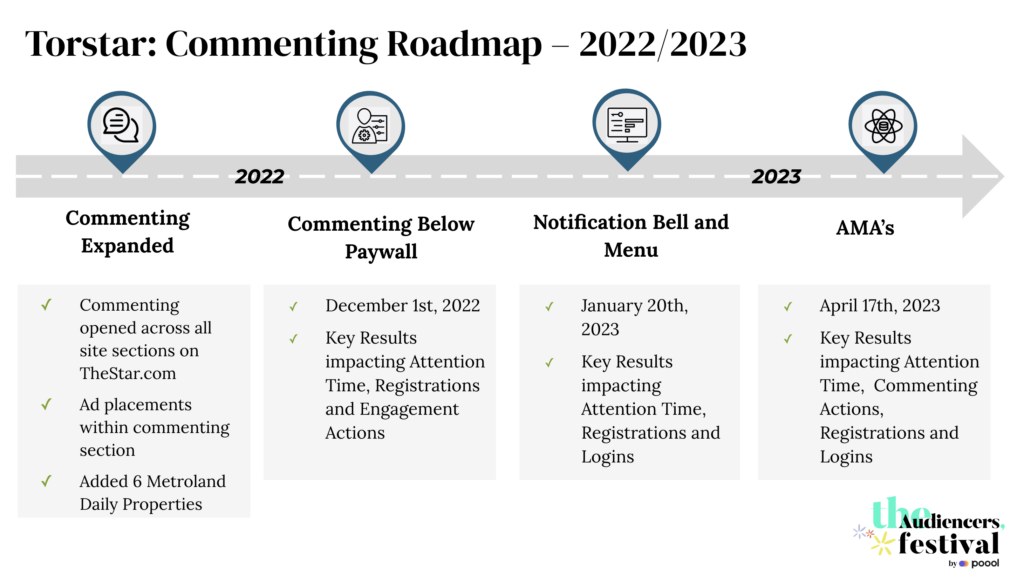
Commenting
Commenting below articles proved to be a solution to 2 issues:
- Tying commenting to registration ensured that all commenters were de-anonymized and agreed to the publisher’s code of conduct. This helps to create a higher quality comments section and safer, more valuable community environment that users feel enticed to partake in.
- Commenting could help to both drive registrations and provide an experience that wasn’t available to anonymous users
Using commenting to drive registration growth
Previously, commenting was behind the paywall, reserved for subscribed. The first decision made was to open the comments section up, creating a sense of FOMO whereby readers feel like they’re missing out on the value in the article and eventually want to subscribe.
If a user tries to like a comment, share a comment or reply to one, they’re immediately encouraged to register. Almost immediately, this had a hugely positive impact on conversions and engagement:
- Time Spent within the commenting section increased 30%
- 26% increase in new commenters
- 55% increase in anonymous comment readers
- 71% increase in users clicking to other “Active Conversations” (Recirculation)
- Registrations increased 72% and now account for 25% of all registrations
- 405% increase in logins
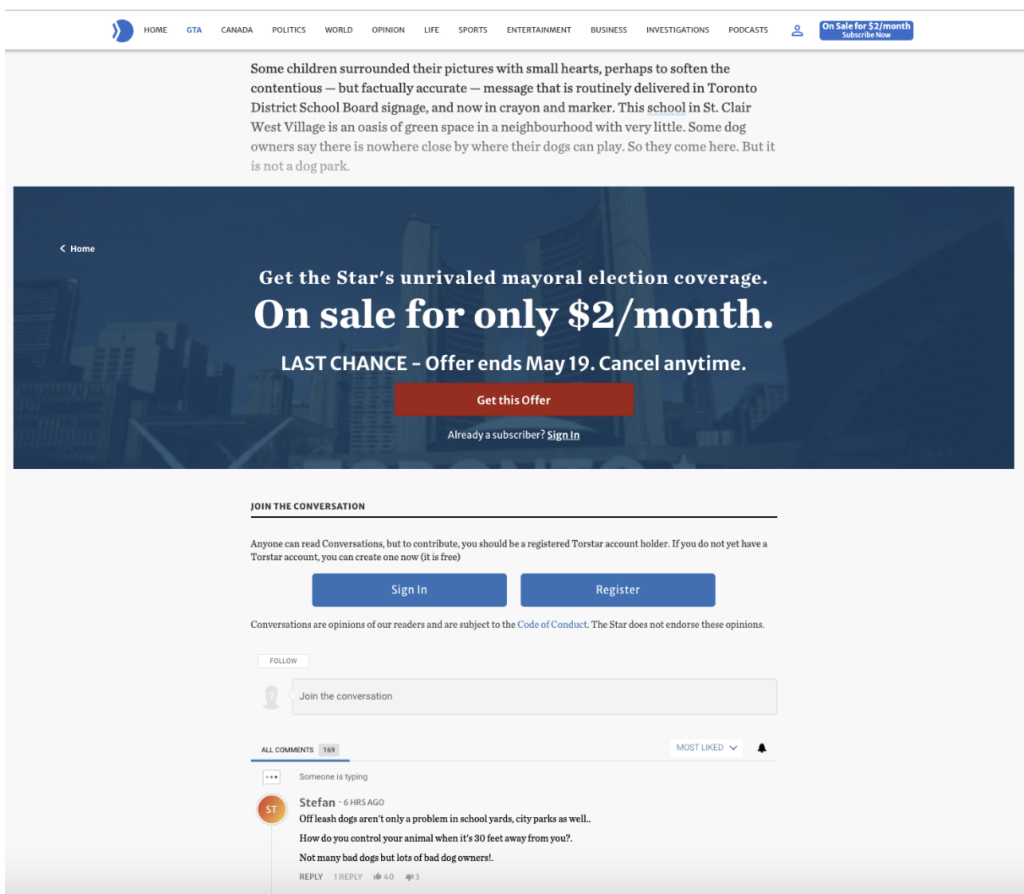
Using Viafoura’s community suite and working with their moderation team has also been fundamental in this success.
Notifications bell and menu
Taking this engagement further, and to bring value directly to commenters, the team integrated a notifications bell and menu into their logged user’s header bar.
When commenters arrive on the site, they’re immediately alerted of replies and brought back to the content to continue the conversation. This has proven to be very valuable for recirculation purposes – people return to the content, whether it was evergreen or not, to continue the conversation.
They’ll also receive a notification email, which has a 24% CTR, bringing them back to the platform to engage further.
- Volume of comments increased by 60%
- Comments per article increased 21%
- Likes/Dislikes on comments increased 63%
- Replies to comments increased 79%
- Clicks on “More Active Conversations” increased 40% (this user is already engaged in the comments section, so this allows them to get involved in other conversations on the site)
- Time Spent in Comment section increased 51% when compared to period after launching below paywall
Ask Me Anything
The Toronto Star has seen great success with the Billionaire Murders podcast, but the majority of this engagement was off-platform. The question was ultimately how can these audiences be brought back to their own platform? How can The Star create unique experiences for these users that they’re not getting already with the podcast?
The solution was a masterpiece collaboration between product, marketing and the newsroom – an Ask Me Anything feature. Following every new episode release, users can submit questions that Kevin (the podcast host) would answer in the comments section.

With its success, these AMAs are evolving, with versions for election coverage and now video stream AMAs with a journalist and moderator. These unique experiences draw users back to the publisher’s own platform.





